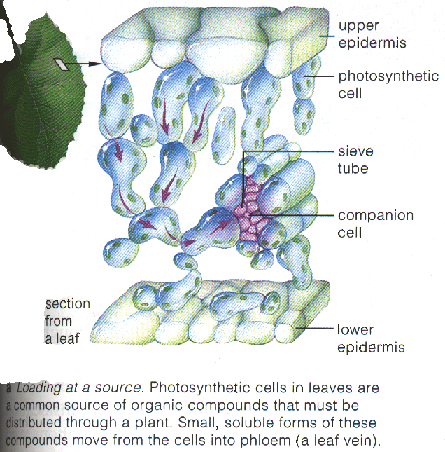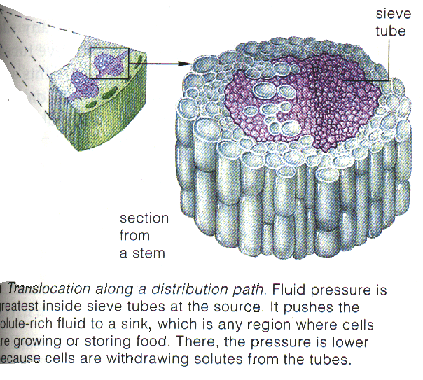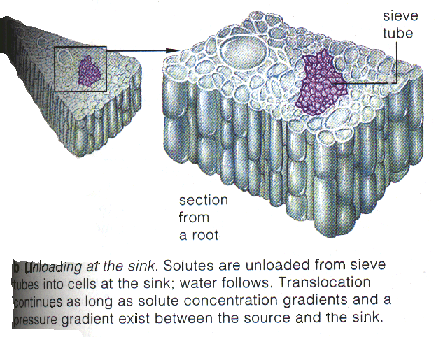Translocation
Transport of organic solutes in plants
Translocation is the movement of sucrose and other organic materials from
one place to another within the plant body, primarily through the phloem. Concentration
(pressure) gradients drive this process.
Translocation typically begins in any plant location where sucrose (or the
other organic solute) is in high concentration. Such a spot would typically
be the palisade or spongy mesophyll cells in the leaf as shown below. Sucrose
has just been manufactured by chloroplasts in these cells so is in greatest
concentration here. There is a lower sucrose concentration in the sieve tubes
(of the phloem). This concentration or pressure difference causes the sucrose
to diffuse toward and into the phloem of the leaf and hence to the phloem of
the stem (where there is even less sucrose).

The next diagram below illustrates translocation in the stem,
with the stem cross-section as a pie slice and a larger view of the sieve tubes
within the phloem. The sucrose moves up and down the stem in the phloem in the
direction that has the lower concentration of sucrose.
Any cells which "burn" sucrose as fuel for respiration,
are growing and needing the sucrose to construct cellulose (a key component
of wood), storing the sucrose for later use all withdraw sucrose from the stem,
thus lowering the sucrose concentration.

The diagram below represents the root. Sucrose is stored in the cortex cells
within the root. This removal of sucrose from the phloem within the root lowers
the sucrose concentration there. The high sucrose concentration within the leaf
thus pushes more sucrose towards the root via the phloem.

Long & Slichter



